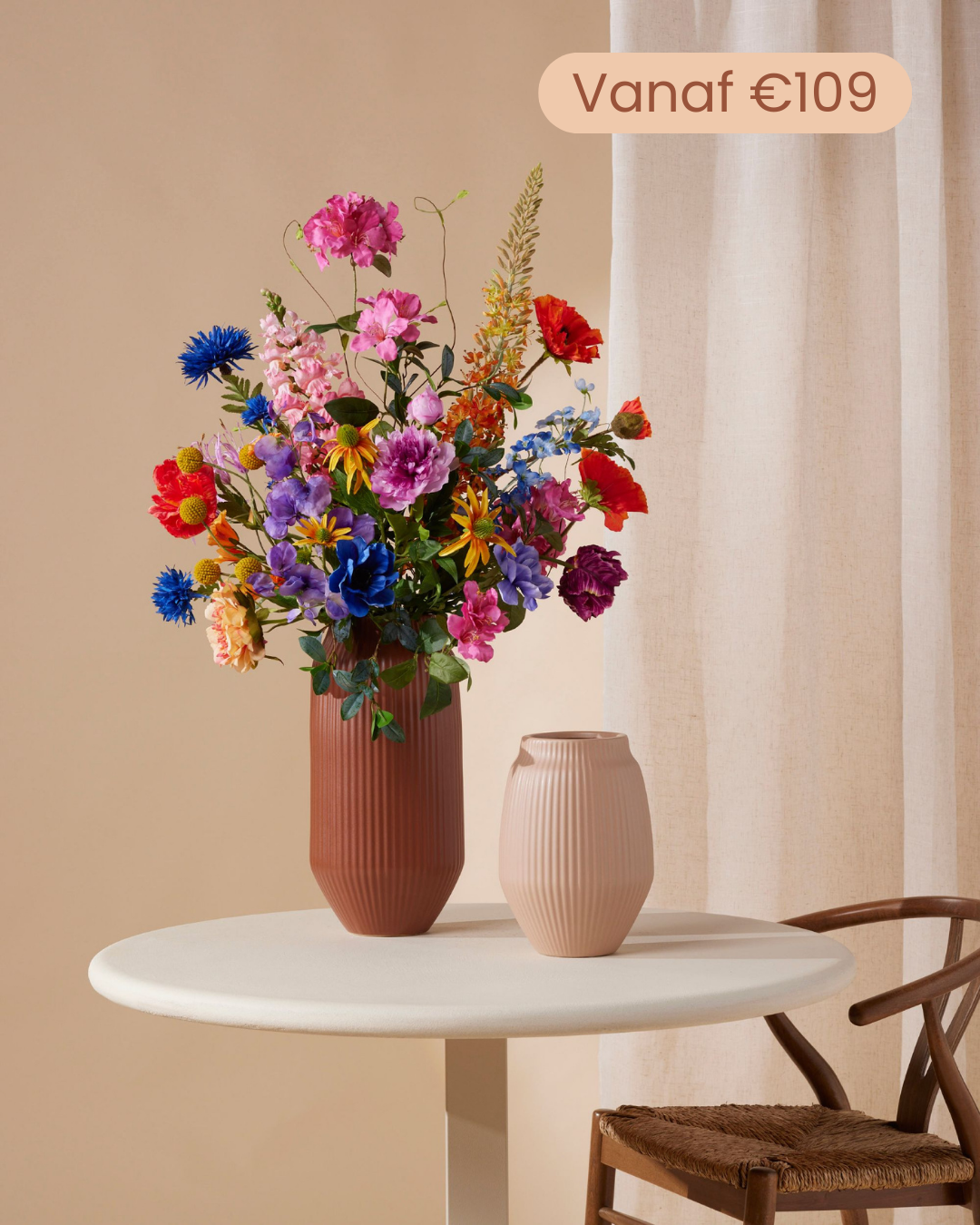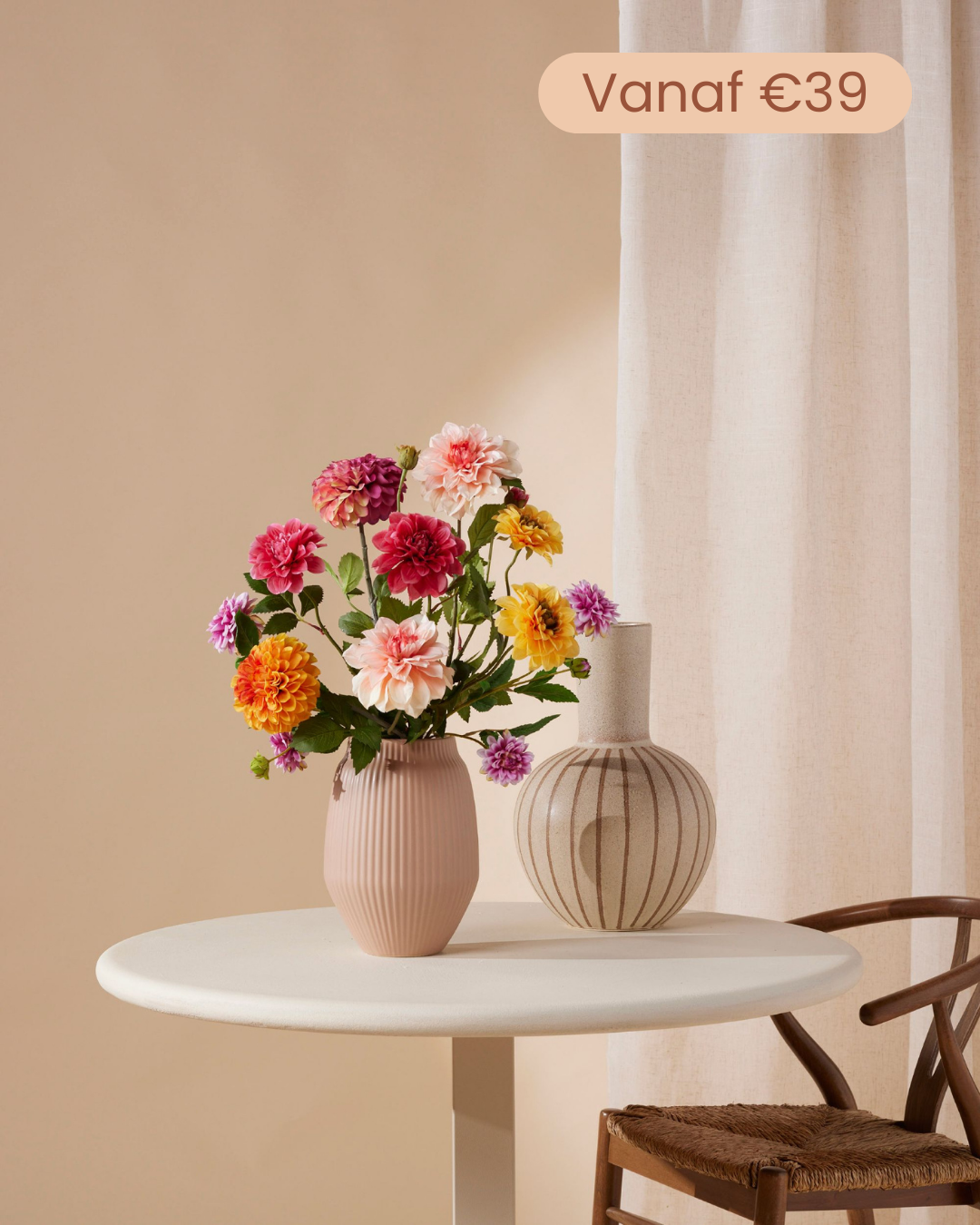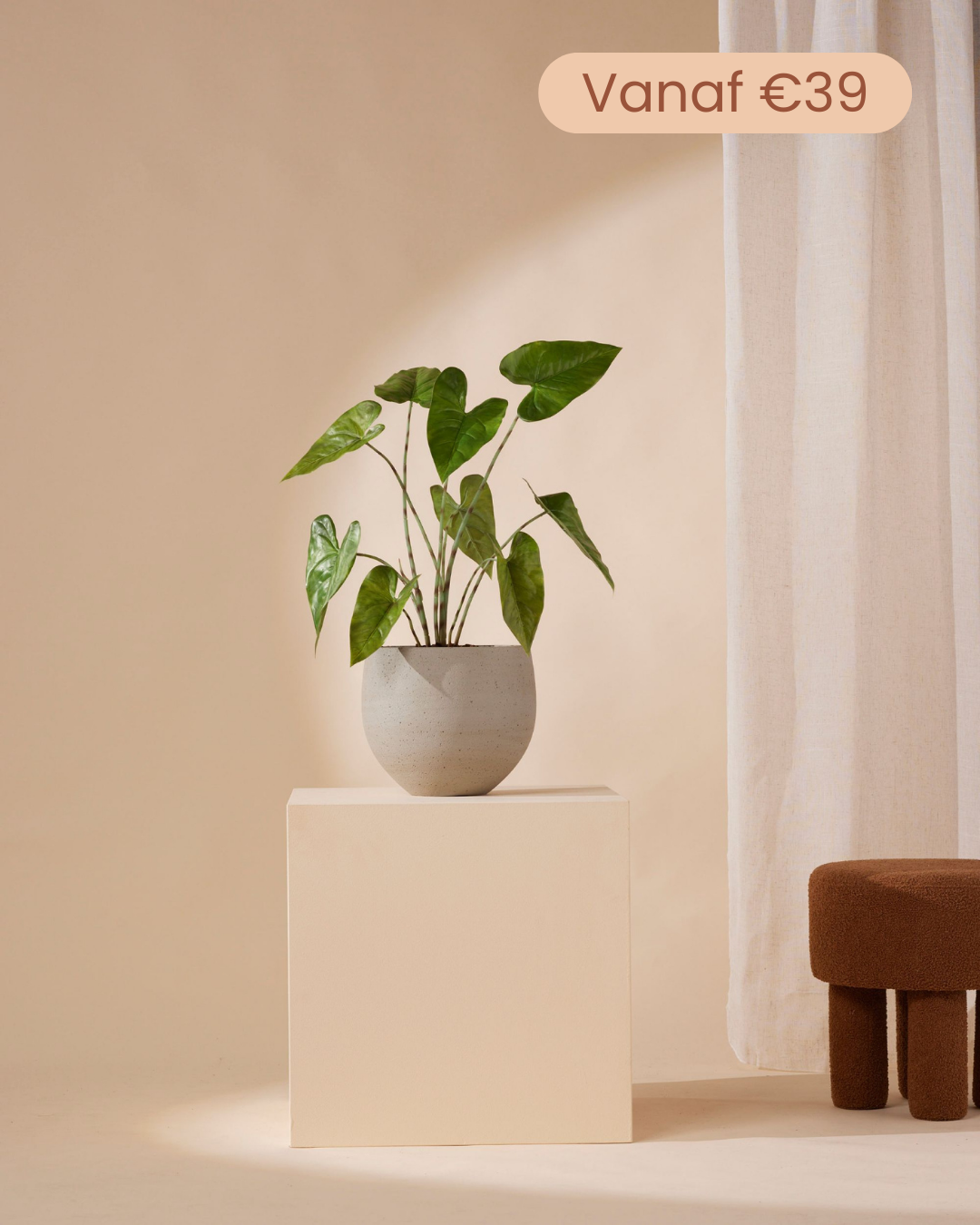Are artificial flowers sustainable?
Artificial flowers have gained tremendous popularity in recent years. This is because their quality and appearance has improved tremendously. This rise of ‘silk flowers’ as a sustainable alternative to fresh flowers constantly raises the same question: are artificial flowers really more environmentally friendly than fresh flowers?
Research into sustainability of artificial flowers
Recent research by importer of artificial flowers and market leader in the Netherlands Emerald (EEG) and the Anthesis provides a nice picture of the CO2 emissions of the entire production process of artificial flowers and fresh flowers.
Comparison of CO2 emissions
To paint a realistic picture of the CO2 emissions of artificial flowers and fresh flowers, they have analysed the entire production process from raw materials to waste processing. carried out by looking at the entire production cycle of these products. The production process of artificial flowers and fresh flowers usually consists of the six stages below:
1. Raw materials/materials
2. Production
3. Packaging
4. Distribution/transport
5. Storage
6. Waste treatment
Different types of flowers
To arrive at figures representative of the categories of artificial flowers and fresh flowers, the analyses took place on different types of flowers. The results of these different types of flowers were combined to arrive at an average emission.
| Artificial flowers | Fresh flowers |
| Gloriosa | Chrysanthemum |
| Rose | Rose |
| Gypsophilia | Tulip |
| Sunflower |
The analysis of the above flowers in the 6 different phases of the production cycle produces an average CO2 emission per flower stem. This can be found in the table below.
| Average CO2 emissions per flower stem | |
| Fresh flowers | 0.555 kg |
| Artificial flowers | 0.498 kg |
These figures show that, on average, the artificial flowers studied have lower CO2 emissions than fresh flowers. This difference becomes even greater when looking at specific flowers. For example, an artificial rose is found to produce up to 70% less CO2 emissions than a fresh rose.
| Average CO2 emissions per flower stem | |
| Fresh rose | 1,080 kg |
| Artificial rose | 0.321 kg |
Artificial flowers more durable with long use
One of the biggest advantages of artificial flowers is their longevity. A fresh flower loses its splendour after a few days, after which it is often discarded. Artificial flowers, on the other hand, can last for years. This aspect was not included in the study, but is an important consideration when assessing the durability of artificial flowers.
How do you consciously choose flowers?
The choice between artificial flowers and fresh flowers is ultimately about long-term sustainability. Artificial flowers tend to have lower CO2 emissions and last longer. Fresh flowers, on the other hand, have a greater ecological impact due to their cultivation and transport, but they offer a natural and biodegradable product. By thinking about the full life cycle of a flower, we can all contribute to a more sustainable future!
Take a quick look at our beautiful collection of artificial flowers!
What are you looking for?
-

Artificial flowers bouquet
Fall in love with your home every day with a beautiful hand-tied...
-

Artificial flowers bunches
Our beautiful bouquets of artificial flowers will take you back to your...
-

Large artificial plants
Bring a little magic into your home with our large artificial plants!...
-

Small artificial plants
Discover our collection of small artificial plants!



